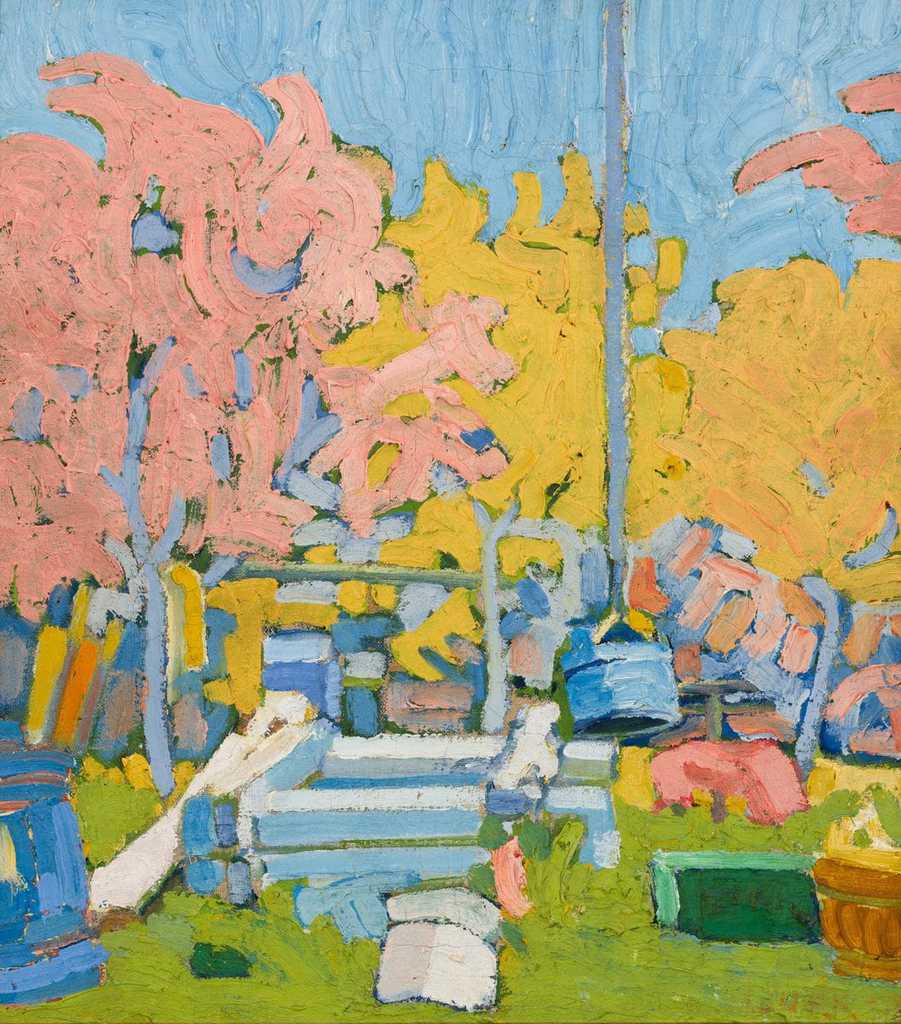
Herbert Lukk, whose primary occupation was that of a professional soldier, painted little in his life, devoting a large proportion of his time to serving in various armies, in the course of which he was killed in action at a young age in the Estonian War of Independence. This motif was painted using bright, almost unmixed colours, as is very typical of Lukk, and in such a way that the motif is almost unrecognisable. When we look at this painting, we look first and foremost at colours, and not so much at their transitions, blending, and overlaps as at pure colour as such. Such vivid, warm tones are usually associated with ‘optimism’ and ‘affirmation of life’, colours are given emotional value, even though the artist might be interested not in emotion, but rather in pigment and its visual effect. Even in art, everything does not always have to be associated with feelings.
On the other hand, the motif appears to be strange. It is possible that the artist painted some view from home while on leave in the autumn. In such a case, it is a nostalgic attempt to grasp at something stable and firm, and thereby to construct or reaffirm to himself his own identity. A soldier painting his home carries in it a whole series of desires, because something is depicted that is unattainable (the soldier cannot live at home) and at the same time evidently would not satisfy him if it were to ever prove to be attainable (the yearning for adrenaline known in soldier psychology). The view of the deserted home yard is thus a battleground of contradictory feelings and yearnings: on the one hand the author no doubt considers it to be beautiful, he poeticises the motif, bathes it in vivid colours. Yet on the other hand the motif proves to be drained – only colour succeeds in truly delighting the artist, not the emptiness of the yard of his home. Incidentally, if we look at the work’s date and title – autumn of 1918 – then this might be one of Herbert Lukk’s last works, since in that same year he went to fight in the War of Independence and was killed in action near Narva at the start of 1919.